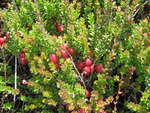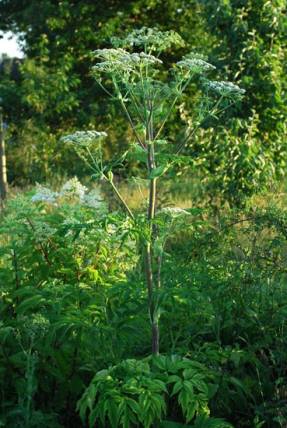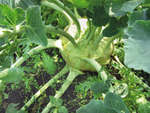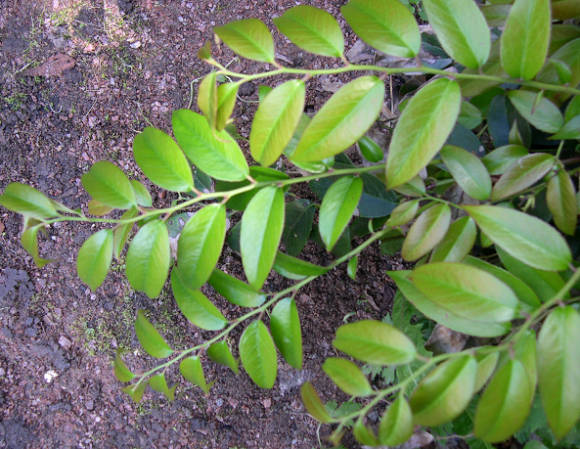
Gooseberries, this thorny bush, some people love just to madness, picking berry after berry, while others plant it in the most remote corners of the garden, fearing to prick or ruin clothes on its sharp thorns, which pierce the skin and leave splinters.
But if only all the troubles of the gooseberry were hidden in the splinters. He suffers from marginal necrosis, from the same goldfish that operates on currants, and most importantly - from spheroteka, powdery mildew, which was once brought from the American continent like the Colorado potato beetle and literally cut down 90% of the gooseberry plantations throughout Russia. People just didn't know what to do. Leaves, shoots, berries were covered in an instant with a mealy bloom and the crop rotted before our eyes.
Spheroteka, like a plague, exterminated hectares by hectares, until suddenly gooseberry plants appeared, which either hurt to a lesser extent, or did not suffer at all from this infection - from them modern sphero-resistant gooseberry varieties went.
By the way, about the varieties. 46 of them have already been created, and they continue to multiply. Not so long ago, in 2016, a new selection variety of the former VNIIS named after V.I. I.V. Michurin, now FNTs im. Michurin (Michurinsk). This variety was actually obtained by two authors - Klavdia Dmitrievna Sergeeva and Natalya Vladimirovna Minaeva, but by coincidence, the hybrid fund, including this selection, migrated to the famous Ekaterina Yurievna Koveshnikova, and subsequently the selection of gooseberries together with the permanent worker Minaeva Natalya Vladimirovna was handed over to me - Nikolai , and here the variety, the name to which was given Galatea, was transferred under a whole galaxy of great names, into which I also modestly got in, these are Klavdia Dmitrievna Sergeeva, Ekaterina Yurievna Koveshnikova, Natalya Vladimirovna Minaeva and Khromov Nikolai Vladimirovich.
Advantages of the Galatea variety
This Galatea variety was bred through breeding work, namely by crossing Prune and Yubilyar cultivars. What happened in the end? We must say right away that the variety is affected by the spheroteka, but if it is planted on nutritious and moist soil, protected from the north side, but well-blown from the south, using an open space and a distance between the bushes equal to two meters for planting, then misfortunes can be avoided.
But we got distracted. So, the Galatea variety. It is characterized by an average ripening period, an average degree of ripeness, average height and average spreading of the bush. The leaf blades are quite typical for gooseberries, they are green in color, without any shades. The thorniness of the shoots is average, and there are more thorns in the middle part of the bush, making it quite easy to collect the fruits. Speaking of the fruits, they are very large in a good agricultural background, where weeds are removed in time, the soil is loosened, and fertilizers are applied, the weight of each fruit can reach 7.0 g, and the average can range from 6.5 to 6.8 g. The color of each fruit dark red, rich, attractive, rounded shape, but slightly elongated at the sides.
The taste of the fruits of the new gooseberry variety Galatea is quite pleasant, it is sweet, but the royal sourness, which is characteristic only of gooseberry fruits in this combination with sugar, is always present. For me, the tasters evaluated the taste of Galatea fruits too strictly, they give it 4.6 points out of five possible, but you can safely put 4.7 and even 4.8, because the fruits are really very tasty.
As for the yield, it also entirely depends on the agro background on which the shrub grows, on moderately moist soil with sufficient nutrition and moisture, the yield can reach three and four kilograms from a six-year-old bush, but, of course, on a dried and overgrown wheatgrass bed of scientific institutions, it did not exceed two kilograms.
In addition, of the undoubted advantages of the Galatea variety, one can note its high winter hardiness, and to all five generally accepted components - the plants tolerate winters well with a small amount of snow cover in combination with high temperatures, with provocative thaws in the middle of winter, with recurrent spring frosts, from which neither ovary nor flowers suffer.
Growing

Requirements for planting material... Of course, when choosing this variety for purchase, you should definitely go to nurseries, because in the markets, you simply will not find a novelty from your hands, or buy a fake. Even in nurseries, when choosing a biennial planting material, take a good look at the root system and the aerial part. The roots should not be torn off and chopped off; the variety should have a well-developed powerful root system and a sufficiently developed aerial part, in a two-year-old consisting of two or even three shoots.
Preparing for landing... It is best to start planting Galatea, as well as to purchase, in autumn, usually starting in mid-September, when active leaf fall begins and the plants fall into a state of dormancy. It is better to plant plants immediately after purchase, but first it is advisable to dip them in a clay chatterbox so that the roots do not dry out.
Before planting Galatea, treat the area well, dig up the soil with a full bayonet of a shovel and be sure to add half a bucket of well-rotted manure, 250-300 g of wood ash and a handful of nitroammophoska. When digging the soil and planting fertilizers, try to choose wheatgrass rhizomes whenever possible, wheatgrass is the worst enemy of any gooseberry variety.
Autumn planting... Further, when the place is chosen (open, well-lit, without stagnation of melt or rain water), it is necessary to level it and start digging planting holes. Retreat one hole from the other at a distance of about 2 meters so that the bushes do not interfere with each other in the future. Examine the root system of the Galatea seedling, if possible, the hole should be 25-30% larger than the root system of the seedling, but no more. At the bottom of the hole, be sure to put drainage (broken brick, expanded clay), on top throw a couple of shovels of humus mixed with usually garden soil and 100 grams of wood ash. After that, pour a bucket of water at the bottom, preferably rainwater, and you can start planting a Galatea seedling.
When planting, the main thing is to try so that the root collar is buried a couple of centimeters into the soil, and that all the roots look down and to the sides, but do not stick up. Planting a Galatea seedling is convenient for two people, one holds the bush and spreads the roots, the other pours and compresses the soil so that there are no voids between the roots and the soil. When the hole is completely filled with soil, it remains neatly, but with an effort to compact, pour another bucket of water and mulch with peat or humus to prevent rapid evaporation of moisture from the soil and allow the roots to take root well in a new place.
Pruning... After planting, strong pruning is not worth doing, some advise you to remove all shoots altogether, leaving only parts with growths that have only a few buds, but in the case of Galatea, you can never do this, the variety rather slowly builds up its vegetative mass, so you can only remove broken ones when planting or too weak, similar to sick, shoots, and the rest is quite acceptable to leave intact. It is useful to cover all the cuts with garden pitch.
Spring planting... If you wish, you can plant a Galatea seedling in the spring, and if you want to buy it in the fall, but then it is better to keep the seedlings in the dig hole. For digging, choose a place with moist and loose soil, in a place where more snow constantly accumulates.
In the spring, Galatea should be planted even before the buds open, usually at the end of April or early May, the planting principle is absolutely the same, but after spring planting, a couple of tablespoons of nitroammofoska should be poured under each bush, after loosening and watering the soil well.
In conclusion, I would like to say that gooseberries do not belong to the crops of an invasive plan, gooseberries, especially Galatea, develop moderately, so do not expect a sharp surge in growth activity.To protect against spheroteca, just in case in the spring, before budding, treat the plants with 2% Bordeaux liquid and repeat the treatment after flowering, but already with 1.5% Bordeaux liquid, and you should be fine!
See also the article about planting gooseberries. How to plant a gooseberry correctly.
Photo by the author








